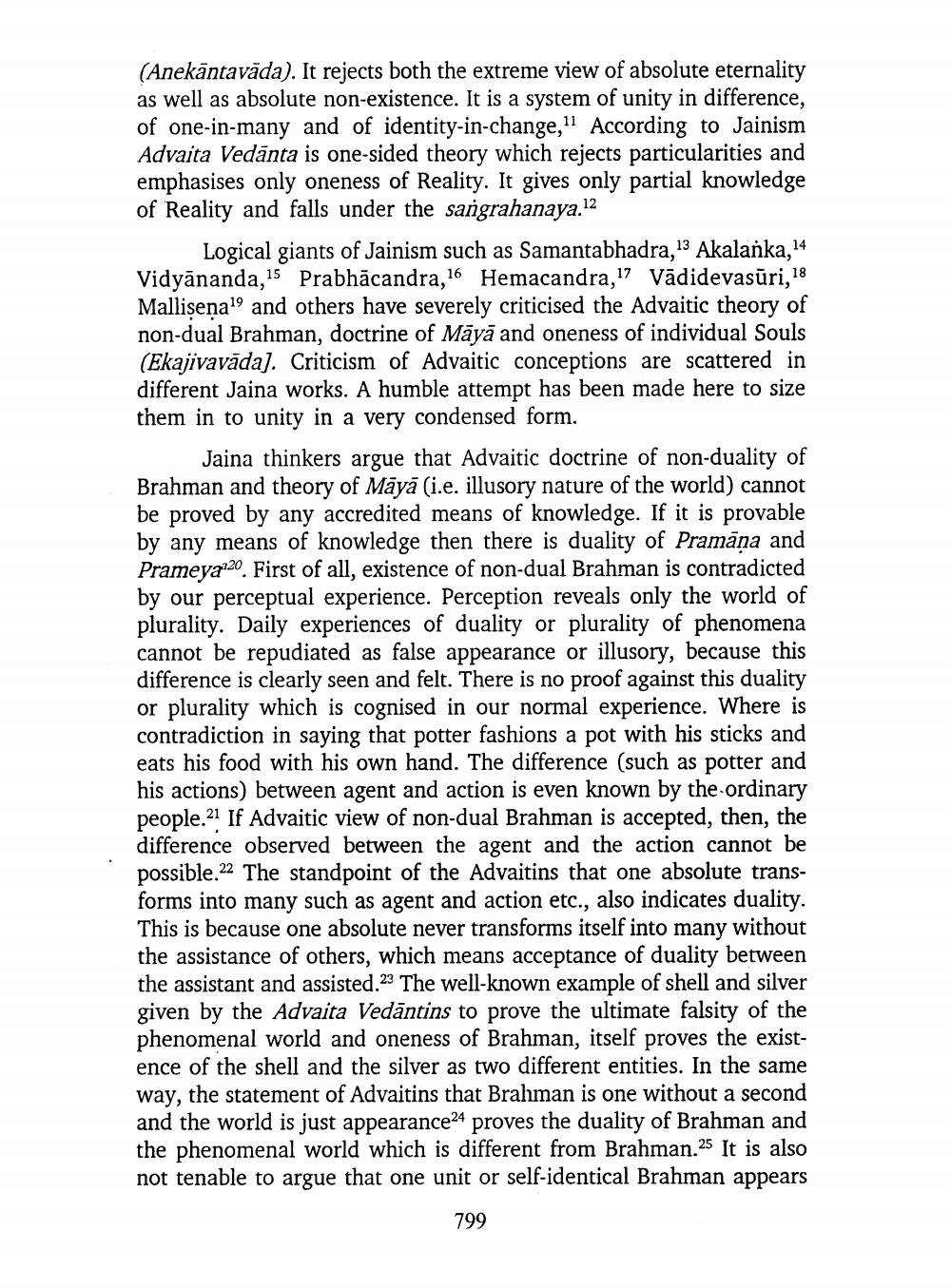________________
(Anekäntavāda). It rejects both the extreme view of absolute eternality as well as absolute non-existence. It is a system of unity in difference, of one-in-many and of identity-in-change," According to Jainism Advaita Vedanta is one-sided theory which rejects particularities and emphasises only oneness of Reality. It gives only partial knowledge of Reality and falls under the sangrahanaya.12
Logical giants of Jainism such as Samantabhadra,13 Akalanka,14 Vidyananda,15 Prabhācandra,16 Hemacandra, Vādidevasūri, 18 Mallisena1 and others have severely criticised the Advaitic theory of non-dual Brahman, doctrine of Māyā and oneness of individual Souls (Ekajivavāda]. Criticism of Advaitic conceptions are scattered in different Jaina works. A humble attempt has been made here to size them in to unity in a very condensed form.
Jaina thinkers argue that Advaitic doctrine of non-duality of Brahman and theory of Maya (i.e. illusory nature of the world) cannot be proved by any accredited means of knowledge. If it is provable by any means of knowledge then there is duality of Pramana and Prameya 20. First of all, existence of non-dual Brahman is contradicted by our perceptual experience. Perception reveals only the world of plurality. Daily experiences of duality or plurality of phenomena cannot be repudiated as false appearance or illusory, because this difference is clearly seen and felt. There is no proof against this duality or plurality which is cognised in our normal experience. Where is contradiction in saying that potter fashions a pot with his sticks and eats his food with his own hand. The difference (such as potter and his actions) between agent and action is even known by the ordinary people.21 If Advaitic view of non-dual Brahman is accepted, then, the difference observed between the agent and the action cannot be possible.22 The standpoint of the Advaitins that one absolute transforms into many such as agent and action etc., also indicates duality. This is because one absolute never transforms itself into many without the assistance of others, which means acceptance of duality between the assistant and assisted.23 The well-known example of shell and silver given by the Advaita Vedāntins to prove the ultimate falsity of the phenomenal world and oneness of Brahman, itself proves the existence of the shell and the silver as two different entities. In the same way, the statement of Advaitins that Brahman is one without a second and the world is just appearance24 proves the duality of Brahman and the phenomenal world which is different from Brahman.25 It is also not tenable to argue that one unit or self-identical Brahman appears
799




